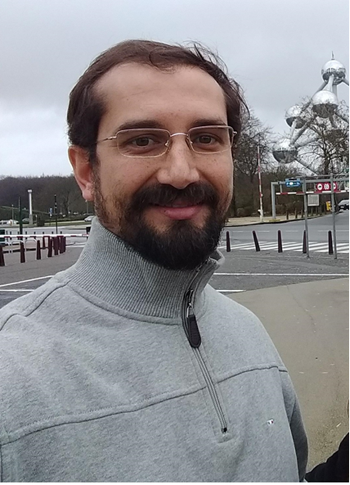Semiotics; semantic model-driven development for iot interoperability of emergency services. Improving the semantic interioperability of iot early warning systems
João Luiz Rebelo Moreira is a PhD student in the department of Services, Cybersecurity & Safety (SCS). His supervisors are dr.ir. L. Ferreira Pires and dr.ir. M.J. van Sinderen from the faculty Electrical Engineering, Mathematics & Computer Science (EWI).
Disaster Risk Reduction (DRR) is a systematic approach to analyze potential disasters and reduce their occurrence rate and possible impact. The main DRR component is an Early Warning System (EWS), which is a distributed information system that is able to monitor the physical world and issue warnings if it detects abnormal situations. EWSs can benefit from the Internet-of-Things (IoT) technologies to realize (near) real-time data acquisition, risk detection and message brokering between data sources and information receivers, comprising both humans (e.g., emergency managers) and machines (e.g., sirens).
Over the last years, numerous IoT EWSs were developed to monitor different types of hazards. Multi-hazard EWSs require integration of existing EWSs and seamless integration with new EWSs in order to be able to detect and react upon different types of situations. In this context, interoperability is a fundamental requirement for effective multi-hazard EWSs, enabling the integration of EWS components, e.g., sensors, devices and platforms, and interworking with other EWSs.
Although IoT technologies offer potential to improve the EWS efficiency and effectiveness, this potential can only be exploited if interoperability challenges are addressed at all levels. In this thesis, we focus on how to improve the semantic interoperability of IoT EWSs, i.e., how to enhance the ability of two or more EWSs (or EWS components) to share data elements in a precise format (syntax) and well-established meaning (semantics). From a literature review on semantic IoT EWS approaches, we selected the three major challenges that need to be addressed together:
(1) semantic integration of a variety of data sources that adhere to different standards, ontologies and data models;
(2) near-real-time processing in time- and safety-critical applications; and
(3) data analysis for effective situation awareness and decision support.
This thesis introduces the “SEmantic Model-driven development for IoT Interoperability of emergenCy serviceS” (SEMIoTICS) framework, which is a holistic approach for semantic IoT EWS, i.e., a semantic model-driven architecture that guides the application of data representations, model transformations and distributed software components.
SEMIoTICS is a framework that can be used to develop interoperable IoT EWSs for different domains, enabling an IoT EWS to act as a cloud-based semantic broker for situation-aware decision support. SEMIoTICS is leveraged by the adoption of ontology-driven conceptual modelling for situation-aware applications, covering both EWS design-time (specification and implementation) and runtime. Furthermore, the SEMIoTICS guides the application of the Findable, Accessible, Interoperable and Reusable (FAIR) data principles, emphasizing the role of standardization initiatives.
SEMIoTICS was validated in the context of the H2020 INTER-IoT project, where a semantic interoperable IoT EWS was developed to detect accident risks with trucks that deliver goods at the Valencia port area. This case study addresses the semantic integration of a variety of data sources with processing in safety-critical applications for effective emergency response. The solution considers existing domain-specific ontologies and standards, along with their serialization formats. In this case study, accident risks are assessed by monitoring the drivers’ vital signs with electrocardiogram (ECG) medical wearables, and the trucks’ position with speed and accelerometer data. Use cases include the detection of health issues and vehicle collision with dangerous goods.
In particular, an extension of the current European semantic standard for IoT was produced and validated for the representation of ECG data, coined as SAREF4healh. Non-functional validation of the framework includes an analysis of the accuracy and efficiency of the semantic translations, as well as a performance analysis of JSON for Linked Data (JSON-LD) for IoT scenarios and an analysis of the semantic brokering scalability. Specific contributions include:
· Improved IoT Semantic Interoperability: (1) semantic translations between semantic IoT standards (W3C SSN/SOSA and ETSI SAREF) for semantic integration; and (2) SAREF4health as the first extension of SAREF for the healthcare domain exploiting the time series concept;
· Improved Situation Identification for IoT EWS: higher semantic expressiveness with new version of the Situation Modelling Language (SML) and Complex Event Processing (CEP) technology;
· Interoperability Reference for Emergency Services: improved reference architecture validated through an open source cloud-based cardiac IoT EWS.



